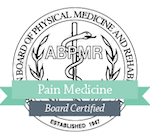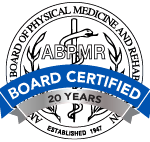
“For this reason my loins are full of anguish; Pains have seized me like the pains of a woman in labor. I am so bewildered I cannot hear, so terrified I cannot see.” – Isaiah 21:3
Pain. Everyone experiences pain. We even have different pain classifications, characteristics, and names for pain. Although descriptions of pain date back to biblical times, the perception of fibromyalgia as a pain syndrome represents a convergence of long historical threads: those relating to pain in the muscles and bones, and those that are related to chronic fatigue and sense of debility.
What and How’s of Fibromyalgia
Let’s start with the basics. To understand fibromyalgia let’s look at where the word itself came from:
Fibro = Fibrous tissue
Myo = Muscle
Algia = Pain
From the root words, we can get an idea of what fibromyalgia is. Fibro- is a Latin word meaning “fibrous tissues”, myo– is a Greek word, which means “muscle”, and –algia from the greek word algos, which means “pain”.
The term “Fibromyalgia” (FM) literally means: Pain that originates from the fibrous tissues of the body and muscles.
Diagnosing Fibromyalgia
During the 1980s, studies showed that a diagnosis of fibromyalgia (FM) included many descriptions of signs and symptoms of other conditions such as fibrositis, muscular rheumatism, ligament strains and other syndromes. Due to the confusion and questions about fibromyalgia, a committee was formed under the Direction of Dr. Frederick Wolfe at the University of Kansas to define fibromyalgia. In their study, they found out that fibromyalgia can be singled out to other conditions since fibromyalgia syndrome has no finding of inflammation; and that pain is the dominant clinical picture.
Clinically, Fibromyalgia is diagnosed after other medical conditions such as Rheumatoid Arthritis, Osteoarthritis, Chronic Fatigue Syndrome, and other disorders were ruled out. These disorders, also present some of the common symptoms of fibromyalgia, such as diffuse body pain, which might be confused with FM. Therefore, a correct diagnosis is crucial.
Why and How Do We Hurt with Fibromyalgia?
“When pain is unbearable it destroys us; when it does not it is bearable.”
— Marcus Aurelius
An individual with fibromyalgia frequently complains of pain. The pain of FM is different from a stomach cramp, a headache, swollen joint, or a toothache. It has been described as aching, stiff, or spastic. Unlike headaches and joint pains and other pains, FM may respond poorly to some pain relievers like Acetaminophen (Tylenol), Aspirin, or Ibuprofen (Advil). In short, fibromyalgia is like a pain amplification syndrome.
What makes FM a pain amplification syndrome?
Studies revealed that FM is characterized by dysfunctions in the central nervous system’s processing of a sensory input of pain signals. Meaning, it hurts where and when it shouldn’t hurt. Pain amplification can be an end result of disruptions in an individual’s pain circuitry, or abnormalities in the levels of neurotransmitters (brain chemicals), which may result into more and more and more pain.
Clinical Symptoms
Fibromyalgia may have two or more of the following symptoms present:
- Diffuse (widespread) body pain
- Fatigue
- Stiffness
- Post-exertion malaise
- Headaches
- Swollen feeling in the tissues
- Sleep-disturbances (non restorative sleep)
- Numbness/ tingling/ tenderness
- Dysmenorrhea (women)
- Dry mouth (Sicca Syndrome)
- Dizziness
- Sensitivity to noise, smell, and stress
Also, 20 – 50% of those who have fibromyalgia might experience the following:
- Mood swings
- Blurred vision
- Irritable bowel syndrome
- Heart palpitations
- Cold extremities
- Feverous feeling
- Allergies
- Restless legs
- Itchy skin
- Muscle twitching
- Hearing disturbances
- Migraines
- Breathing problems
- Light sweating
- Multiple chemical sensitivities
Defeating Fibromyalgia: Treatment Principles
“A man cannot be comfortable without his own approval.” – Mark Twain
Although, there is no cure that would permanently end fibromyalgia, we can initiate numerous changes and work for fibromyalgia treatment. Simply stated, there are still lots of ways to relieve pain and to improve an individual’s sense of being.
The most important principles for conquering fibromyalgia are listed as follows:
- Remove the causes
- Control the provoking factors of pain
- Manage all related symptoms
- Improve functions
- Heal and recover
- Prevent pain episodes and complications
Summing it up!
A minority of individuals with fibromyalgia requires a formalized rehabilitation therapy or program to treat this condition. When a rehab program is prescribed however, it generally consists of physical exercise program or physical therapy, depending on the patient’s condition. The principal goals, of a fibromyalgia rehab, or any other kind of rehabilitation process should include promoting well-being, reducing stress, and improving the ability to cope with pain.
At Pegasus pain management, we examine, assess, and diagnose individuals holistically, and try to find ways to deal with any condition in a constructive manner. To learn more about Fibromyalgia and how to treat this condition, book an appointment and see one of our pain specialists!
Bibliography:
Isaiah 21: 3 at this my body is racked with pain, pangs seize me, like those of a woman in labor; I am staggered by what I hear, I am bewildered by what I see. (2000). Retrieved December 11, 2016, from http://biblehub.com/isaiah/21-3.htm
Wallace, D. J., & Wallace, J. B. (2002). All about Fibromyalgia: A guide for patients and their families. New York: Oxford University Press.
contributors, 2. Marcus Aurelius quote: “When pain is unbearable it destroys us; when it does not it is bearable.” Retrieved December 11, 2016, from https://quotefancy.com/quote/859885/Marcus-Aurelius-When-pain-is-unbearable-it-destroys-us-when-it-does-not-it-is-bearable
Man, S. C. (1998). Questions and answers about fibromyalgia. Winnipeg: Henderson Books.
BrainyQuote, 2016. (2001). Mark Twain quotes. Retrieved December 11, 2016, from https://www.brainyquote.com/quotes/quotes/m/marktwain106097.html
Bassman, L. (2007). The feel-good guide to Fibromyalgia and chronic Fatique syndrome: A comprehensive resource for recovery. Oakland, CA: New Harbinger Publications.
Meilink, L., Rhoades, P., & MD Linda Meilink with Patrick Rhoades (2009). What your doctor Doesn’t know about Fibromyalgia: What you need to know that could save your life. New York, NY, United States: iUniverse.
Bigelow, S. L. (2000). Fibromyalgia: Simple relief through movement. New York: Wiley, John & Sons.
St Amand, P. R., Marek, C. C., St. Amand, P. R., & St. Am, P. R. (2012). What your doctor may not tell you about fibromyalgia: The revolutionary treatment that can reverse the disease (3rd ed.). New York: Grand Central Life & Style.
Salt, W. R., & Season, E. H. (2000). Fibromyalgia and the mind/body/spirit connection 7 steps for living a healthy life with wide.. Santa Cruz, CA, United States: ebrandedbooks.com,US.



